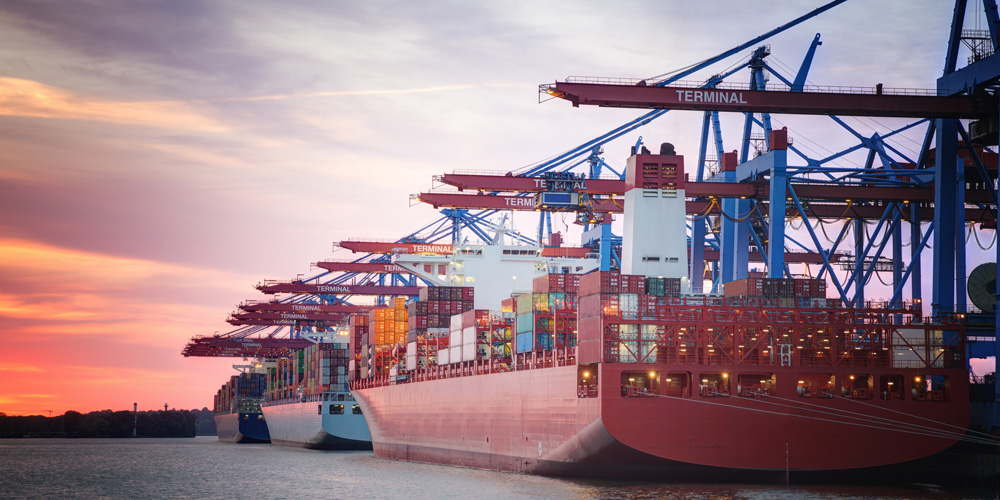Rethinking spare capacity
The global economy is suffering shortages in computer chips, furniture, truck drivers, and more. A common factor underlies all of them: a lack of slack.
When Joni Mitchell sang, “You don’t know what you’ve got till it’s gone,” she was fretting about paving over green spaces to make parking lots. Today, many people wax nostalgic about something else that has vanished before our eyes, with devastating results: spare capacity.
The global economy, currently in the throes of an asymmetrical recovery, is beset by shortages tied to a lack of capacity for a range of goods and services: storage for natural gas in the UK, computer chip manufacturing, docks where container ships can unload, and the drivers and trucks to take those goods to warehouses and stores. In many instances, the surge in economic activity on the heels of pandemic-induced shutdowns has simply overwhelmed systems.
Over the past few decades, technology, best practices, and trends in management thinking have conspired to iron excess and slack out of those systems. The just-in-time mentality has spread from the management of auto parts to pretty much everything, driven by digital technology that allows for constant updating of demand—anticipated and real. Investors and deployers of capital clamor for metrics that describe how well executives are managing resources. There’s real pressure to monetize every asset, and to divest those assets that don’t produce a return.
The net result is that spare capacity has become one of the things most dreaded in the executive suite: an enemy of financial efficiency. Hotels, which constantly have to report their occupancy rates, don’t want to have vacant rooms. Hospital administrators would be pilloried for recommending the construction of wings to be used only for potential overflow. The vast armies of professional services workers are intimately familiar with the concept of a utilization rate—the percentage of their time that is billed out.
In some areas, of course, we have long recognized that maintaining spare capacity—human and physical—is important. Electric utilities arrange to have on standby, in the case of outages or surges, more power-producing capacity than is typically needed. Many households, fearful of disaster-induced shortages, maintain their own spare capacity in the form of generators, pallets of bottled water, and bags of rice. China has a strategic pork reserve to ensure adequate supplies of a dietary staple. The US maintains a strategic petroleum reserve, billions of barrels of oil buried in salt domes in Texas and Louisiana. In a warehouse in Quebec, Canada maintains a strategic reserve of another highly valuable viscous commodity: maple syrup.
But the reality is that for many industries, especially in the private sector, the incentives at play are at odds with spare capacity and strategic reserves. Chip manufacturing foundries are enormously expensive to build. The industry is remarkably competitive, and players often subsist on thin margins. Companies find it difficult to invest billions of dollars to construct and maintain state-of-the-art factories that might only be used every few years. The same holds for shipping. Should port operators take over valuable oceanfront land to build extra ports that can handle surges in activity? Should a transport company order a bunch of container ships that might sit idle 95% of the time, as a hedge against spikes in demand? Not if it wants to keep investors happy.
Should a transport company order a bunch of container ships that might sit idle 95% of the time, as a hedge against spikes in demand? Not if it wants to keep investors happy.
It’s particularly hard to maintain spare capacity in people-intensive service businesses. Whether you run a roofing company, a restaurant, or a bank, you can’t afford to pay people to show up to work if they’re not going to be serving customers. In fact, at the many companies in which labor is the single highest cost, the impulse is the opposite. When demand suddenly evaporates, those companies tend to furlough employees or lay them off. Then, rather than wait around to be summoned back to their job, these workers are motivated to find employment elsewhere. This is one of the reasons industries prone to boom-and-bust cycles, such as residential construction or oil drilling, have a difficult time staffing up when demand snaps back.
The events of the last 18 months have pushed a lot of people to reexamine the fundamentals of how our systems work. Do we need to shorten global supply chains to protect against disruption? How quickly should we be pushing for decarbonization? And do businesses need to stop thinking of “spare capacity” as dirty words?




